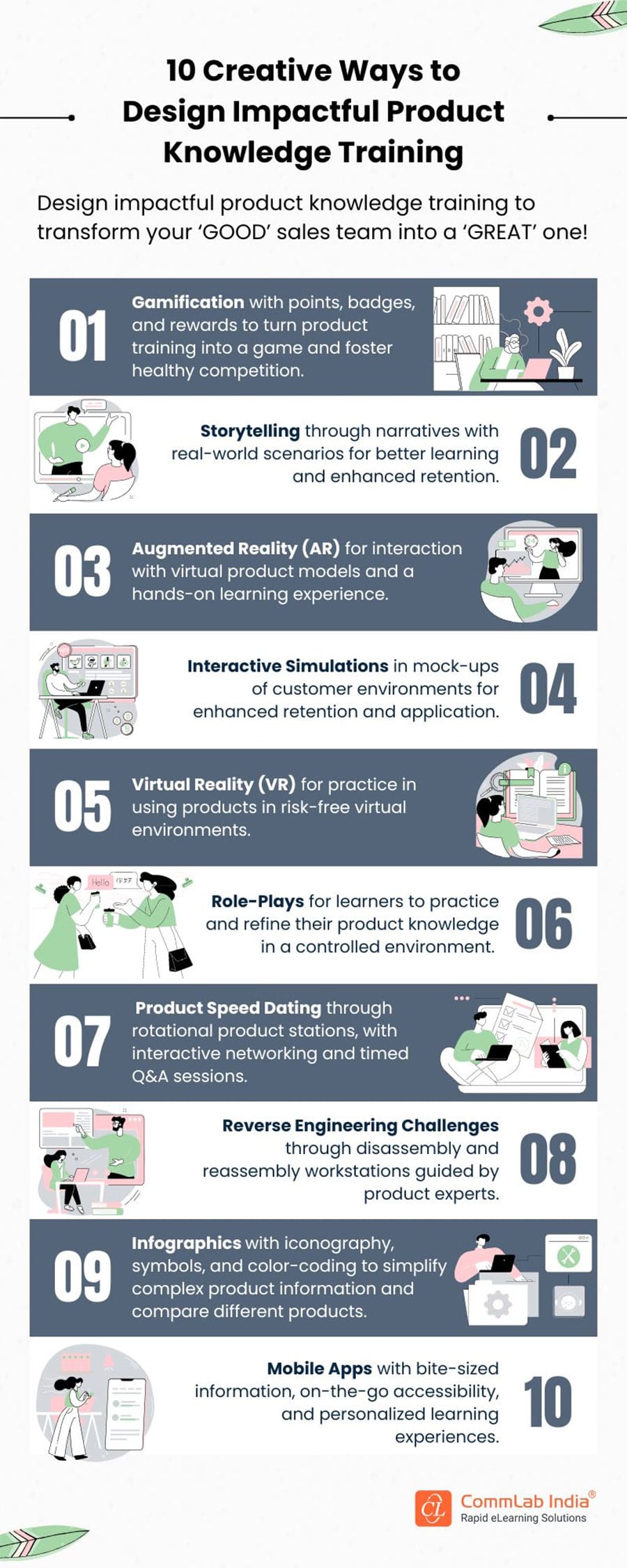10 Creative Ways to Design Impactful Product Knowledge Training [Infographic]
Looking for ways to create impactful product knowledge training? Then you shouldn’t miss the 10 creative ways enlisted in this blog. Read now!

Do you want your organization to succeed in today’s competitive market? If yes, then providing product knowledge training to your employees is a must. It equips the employees with the necessary information and skills to effectively promote and sell products or services. But we’re talking about training in the digital age and competitive business landscape, so relying on traditional training methods just isn’t enough. They often fall short in engaging learners and ensuring retention of key information. To captivate the attention of modern-day learners and attend to their learning needs, you should try to make your training courses more learner-centric and impactful.
And this blog will help you do that. That’s right! In this blog, we'll explore ten creative strategies to design impactful product knowledge training programs that captivate learners’ attention and drive tangible results. So without any delay, let’s start!
Basics First: The Need for Product Knowledge Training
Before we directly jump into the creative ways, it’s important to understand why you need to focus on product knowledge training to ensure a competitive edge. So here are the reasons:
- Well-informed employees instill confidence in customers. This leads to increased sales and customer satisfaction.
- Product knowledge enhances employee performance as it enables them to address customer inquiries promptly and accurately
- When it comes to industries where advancements happen almost every second, staying updated on product advancements is essential. It allows the sales representatives to deliver quality service, thereby maintaining a competitive edge.
→ Download Now: Redefining Generative AI for Dynamic L&D Teams
10 Creative Ways to Design Impactful Product Knowledge Training
Best Practices for Designing Effective Product Training Courses
To design effective product knowledge training courses, you need to strike a balance between planning and implementation. Here are some best practices to help you do so:
- Set clear learning objectives: Clearly outline the goals and learning objectives of the training course.
- Understand the audience: Know your learners’ needs, preferences, and existing knowledge levels. You can consider factors such as job roles, educational background, experience levels, etc.
- Keep the content relevant: Make sure the training content is relevant and directly applicable to learners' roles and responsibilities.
- Use a variety of learning formats: Include diverse learning materials such as videos, audio, animations, case studies, quizzes, etc.
- Provide accessible training resources: Ensure device compatibility and accessibility on various online and offline platforms.
- Incorporate real-world examples: Use real-world examples and scenarios to illustrate key concepts and demonstrate the application of product knowledge in different real-life situations.
- Offer flexibility: Provide flexibility in training delivery, allowing learners to progress at their own pace and access content according to their schedules.
- Include assessments and feedback: Gauge into learners' understanding and retention of the training material. Based on the results, provide constructive feedback to help learners identify areas for improvement.
- Update content regularly: Keep training content up-to-date with the latest product information, industry trends, and best practices.
Parting Thoughts!
Delivering product training is simple but designing product training courses that actually standout and leave an impact on the learners is tough. But now that you understand the need for effective product training and know the creative ways to design impactful product knowledge training courses, why hold back? Start your journey today! You can also leverage AI to save time and improve efficiency of your product knowledge training. Check our eBook below to learn more about AI revolution.







